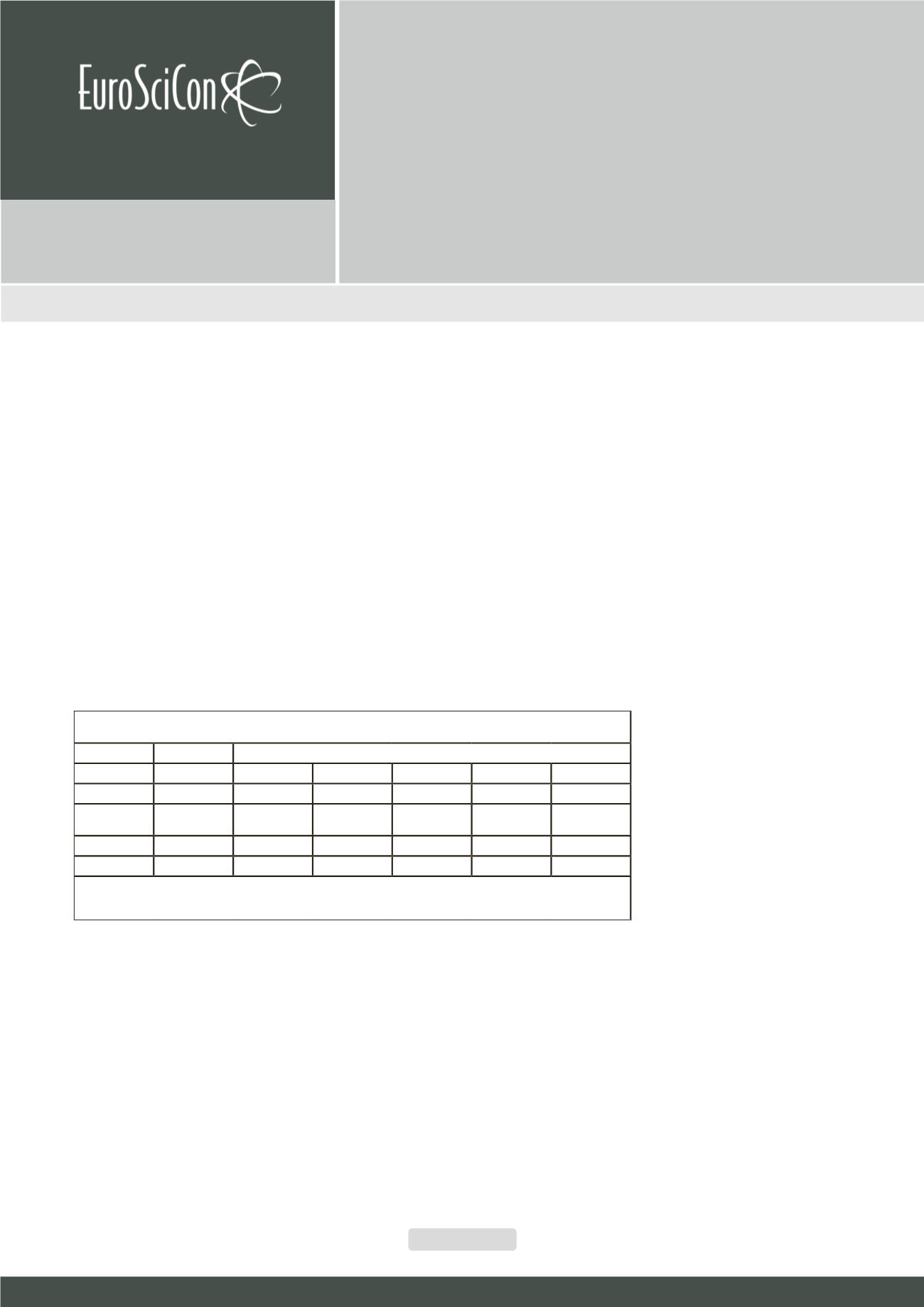

Infectious Diseases
and STD-AIDS
Infectious Diseases and STD-AIDS 2018
Journal of Transmitted Diseases and Immunity
ISSN 2471-8084
A p r i l 2 6 - 2 7 , 2 0 1 8
R o m e , I t a l y
Page 26
A
nal dysplasia precedes anal cancer. High-definition chromoendoscopy
with narrow band imaging and acetic acid was used to identify anal
squamous intraepithelial lesions (SIL) in patients with abnormal anal
cytology. 260 Patients were examined. Demographic characteristics are
mean age (range) 47 (21-82) years; MSM (n= 158); HIV positive (n= 161).
Associated diagnoses are urogynecologic SIL, solid organ/bone marrow
transplantation and inflammatory bowel disease. Lesions were biopsied
for histologic diagnosis and then ablated with hot forceps or Gold probe™.
Results showing comparison of cytology to histopathology are shown in
Table 1.
ASCUS = atypical cells of undetermined significance; LSIL = low grade
squamous intraepithelial lesion; HSIL – high grade squamous intraepithe-
lial lesion; SCC = squamous cell carcinoma. These results are for first time
chromoendoscopy.
Anal transitional zone lesion identification is enhanced by retroflexed
inspection during rectal insufflation. Anal canal lesion detection is
facilitated by endoscopic inspection through a lighted anoscope. Providers
who perform esophagoduodenoscopy and/or colonoscopy routinely
should be able to perform anal chromoendoscopy to detect anal SIL since
the technique is part of routine gastroendoscopic practice.
Biography
Michelle Inkster completed her PhD in Cell and Molecular Biolo-
gy at St Louis University before enteringMedical School at Case
Western University. She is a Staff Gastroenterologist at the
Cleveland Clinic in Cleveland Ohio. She is a Fellow of the Amer-
ican College of Gastroenterology. Her interests are improving
the detection and treatment of anal dysplasia.
mdinkster@aol.comDetection of anal dysplasia with chromoendoscopy and narrow band
imaging
Michelle D. Inkster and James S. Wu
Digestive Disease and Surgery Institute, United States of America
Michelle D. Inkster et al., J Transm Dis Immun 2018 Volume 2
DOI: 10.21767/2573-0320-C1-002
Table 1. Chromoendoscopy (NBIA) in search of anal dysplasia in 260 patients with abnormal anal cytology
Chromoendoscopy (NBIA) in search of anal dysplasia in 260 patients with abnormal anal cytology
Histopathology Histopathology Histopathology
SIL/SCC (%)
LSIL (%)
HSIL (%)
SCC
SIL not found
Cytology
N
ASCUS
141
63/141
(44.7)
46/141
(32.6)
24/141
(17.0)
0 (0)
74/141
(52.5)
LSIL
100
73/100 (73)
54/100 (54)
19/100 (19)
1/100 (1)
25/100 (25)
HSIL
19
13/19 (68.4)
7/19 (36.8)
6/19 (31.6)
0 (0)
5/19 (26.3)
Ascus = atypical cells of undetermined significance; LSIL = low grade squamous intraepithelial lesion; HSIL
– high grade squamous intraepithelial lesion; SCC = squamous cell carcinoma. These results are for first time
chromoendoscopy.
















